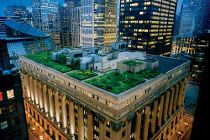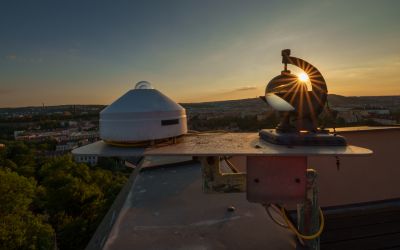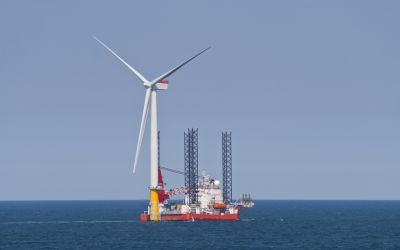Green roofs, a key step in climate change mitigation
Greens roofs, a concept often associated with the fantasy hobbit land of the shires, have had a surge in popularity in recent years, being introduced to major cities to help reduce the impacts of climate change.

Greens roofs, a concept often associated with the fantasy hobbit land of the shires, have had a surge in popularity in recent years, being introduced to major cities to help reduce the impacts of climate change.
As Australia continues to recover from severe floods, one company has decided to push for green roofs in Australia's largest city, Sydney, as part of a radical, new campaign to slow down climate change, introduced by Prime Minister Julia Gillard.
Green roofs and living roofs do not just create an aesthetically appealing image. They are excellent in controlling and managing water: a key problem in Southern Australia at present.
Felipe Kovaic, executive director of Atlantis Corporation, a water management company said: "They enable better stormwater management and reduce the so-called heat island effect. Our founder, Humberto Urriola, had a vision of transforming Sydney into a greener city by covering it with roof gardens."
While city roof gardens have yet to catch on all over Australia, this sustainable business is gaining popularity around the globe. Atlantis Corporation now have 54 patents, offices in Chile, Spain and the US, with distributors and installations in 30 countries, and 80 per cent of their sales generated internationally.
Not only are green roofs a key climate change mitigation strategy, they also help with energy consumption. Green roofs help maintain a buildings temperature by regulating temperature variability –insulating it from cold weather in the winter and absorbing the heat in summer. This reduces central heating and air-conditioning costs.
Often known as roof gardens, they break up the monotonous grey jungle of cities, creating green spaces, and encouraging biodiversity.
Since the industrial revolution, smog and heat levels – know as the urban heat island effect – have increased in major cities. Green roofs, with their intense vegetation, help control the rise in temperature and make the air cleaner.
Canada, a country notorious for it's reluctance to implement climate change targets, has also begun installing green roofs.
In 2009 Toronto announced a legislation mandating green roofs on any new development of a minimum gross floor area of 2,000m2. These developments can be commercial, industrial, and in some cases residential.
Although this legislation is not applicable in other Canadian cities, there are a number of green roofs cropping up across the country.
Critics, however, say that green roofs are not suited to rainy climates.
The B.C.Institute of Technology (BCIT) in Vancouver has taken action to prove to critics that green roofs are not just suited to cities whose typical weather pattern includes long dry spells interrupted by dramatic downpours of rain.
With 1,500 mm of rain every year in Vancouver, a green roof would help reduce 28 per cent of run off, says the director of the Centre for Architectural Ecology (part of BCIT), Maureen Connelly.
This percentage could change, Connelly adds, if the roofs had an increased depth of soil. If the depth of soil was changed from 3inches to 6inches, the roof would prevent even more runoff.
Toronto is hoping that their green roof legislation will inspire other countries to follow their lead.
Toronto Green Roofs
http://www.climateactionprogramme.org/news/the_penultimate_day_at_cop16_and_still_conflicts_plague_the_talks/">The penultimate day at cop16 and still conflicts plague the talks
Author: Charity Knight | Climate Action
Image: jeffmcneill | flickr






